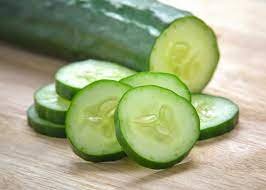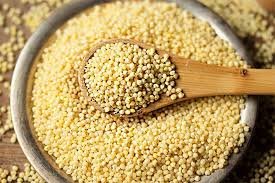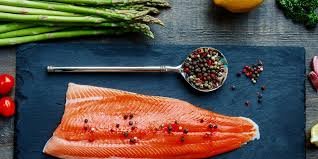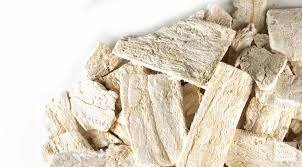Top 10 TCM Foods and Herbs for Diabetes
Traditional Chinese Medicine (TCM) has been used for the treatment of diabetes in China for more than 2000 years. The Chinese language includes two terms for diabetes: the traditional name Xiao-ke syndrome which means “wasting and thirsting.” and the more modern term, Tang-niao-bing, which means “sugar urine illness.” Diabetes is classified into three types: the upper Xiao-ke is characterized by excessive thirst, the middle Xiao-ke is characterized by excessive hunger, and the lower Xiao-ke is characterized by excessive urination which all are closely related to the lungs, stomach, and kidneys and are associated with Yin deficiency (fatigue, weakness, lethargy, and pale complexion). Moreover, according to TCM, Xiao-ke is attributed to three main factors: improper diet (i.e large amount of refined carbohydrates), emotional disturbances (stress), and Yin deficiency.
Diabetes Mellitus in Western terms refers to a group of metabolic diseases that involve carbohydrate, protein, and lipid metabolism. These diseases are characterized by persistent hyperglycemia or high blood sugar which impairs insulin secretion, action, or both.
The therapeutic goal and philosophy in TCM focus on the patient's overall functional state, which can differ from Western medicine. Chinese herbal medicine is one example of TCM and usually concentrates on the holistic treatment of the patient rather than treating a single disease.
On the other hand, western treatments include insulin treatment, pharmaceuticals (mainly hypoglycemic drugs), weight-loss surgery, the ADA plate method or the diabetes plate method, and carb counting.
Moreover, many pharmacological treatments exist to control the primary and secondary symptoms of types such as T2DM which tend to not always be efficacious and do little to treat DMT2 symptoms and can bring adverse side effects.
Top 10 TCM Diabetes Foods and Herbs
Cucumbers: Cucumbers have numerous health benefits. China is the largest cucumber cultivator. Cucumbers are high in:
Flavonoids (anticancer, antioxidant, anti-inflammatory, and antiviral properties)
Antioxidants
Vitamin C, K
Potassium
Phytonutrients
All of these nutrients are contained within dark-green skin, so PLEASE, don’t shave off the skin!
Cucumbers contain mostly water and are very low in calories, making them an ideal food for diabetics due to their low glycemic content.
Moreover, since cucumbers exhibit anti-inflammatory and antioxidant properties, research studies suggest cucumbers can help prevent and control diabetes and limit the oxidative stress seen in diabetics.
2. Bitter Melon: Bitter melon is a powerful nutrient-dense plant that has numerous beneficial compounds. Bitter melon contains high amounts of:
Vitamin C, A, E
B vitamins including B1, B2, B3, and B9 (folate)
Rich in minerals:
Potassium
Calcium
Zinc
Magnesium
Phosphorus
Iron
Good source of dietary fiber. Bitter melon is also high in:
Antioxidants
Antimutagens
Bitter melon is traditionally known for its medicinal properties such as promoting antidiabetic effects. These active substances with anti-diabetic properties include charantia, vicine, and insulin-like compounds (polypeptide p work individually or together to lower blood glucose levels). Moreover, bitter melon contains lectin which reduces blood glucose levels by its action on peripheral tissue and suppression of appetite.
3. Millet: Millets are a group of small-seeded grains that are loaded with fiber, vitamins, and minerals. Whole grains in general are good for diabetics because they are easily digestible and do not raise blood sugar quickly as do refined grains. Additionally, millet is gluten-free which is a great alternative for people living with celiac disease. Millet is a great choice for diabetics due to its high fiber content which helps slow down digestion and as a result, glucose enters the bloodstream slowly without the risk of a blood sugar spike. Moreover
Rich in minerals:
Magnesium
Potassium
Millet is also rich in antioxidants and has a low glycemic index.
4. Salmon (high in Omega-3 Fatty acids): Salmon is good for diabetics because is high in Omega-3 Fatty Acids and can help reduce the risk of common diabetes-related complications like heart disease. People with diabetes tend to have low levels of vitamin D and salmon can provide dietary vitamin D. Salmon may reduce blood pressure, inflammation, and triglycerides.
Rich in vitamins:
Vitamin D
Vitamin B2 (Riboflavin)
5. Tomatoes: Tomatoes (especially raw) are good for diabetics because they are composed almost entirely of water and are low in carbohydrates. An antioxidant found in tomatoes can be beneficial for people with diabetes, reducing oxidative stress. Moreover, tomatoes contain linoleic acid derivatives that may have an anti-hyperglycemic effect.
Rich in:
Lycopene (antioxidant)
B-carotene (used by the body and converts it into vitamin A or retinol)
Potassium
Vitamin C
Flavonoids
Folate
Vitamin E
6. Astragalus (Huang qi): Astragalus has been used in Traditional Chinese Medicine (TCM) for thousands of years and may help protect the body from diseases such as diabetes due to its :
Antioxidant content which protects cells against damage
May protect and support the immune system
reduce or prevent colds
upper respiratory infections
lower blood pressure
Lower blood sugar
Protect the liver
Antibacterial and anti-inflammatory properties: used on the skin for wound care
Antiviral properties
Helps with fast recovery from chemotherapy and radiation
Helps with longevity
A mild diuretic helps with edema
7. Chinese Yam | Shan Yao | Huai Shan: In (TCM), Chinese Yam helps lower blood glucose levels and may help with weight loss by regulating appetite and metabolism. It can also help with:
Slow down acute reactions
Detoxify the body
Targets the kidney, lungs, and spleen
Can address symptoms such as:
Frequent urination
Vaginal discharge
Premature ejaculation
Can help soften the skin and manage skin disorders
May promote wound healing and soothe rashes and burns
8. Kudzu Root | Ge Gen: In (TCM), Kudzu root has been used as a herbal medicine for the treatment of diabetes and other diseases. Kutzu root may help prevent diabetic retinopathy complications, and protect against diabetic neuropathy and vascular dysfunction. Moreover, Kudzu root has anti-inflammation properties due to its isoflavonoids content
Rich in:
Isoflavonoids (specifically puerarin → anti-diabetic effects/glucose lowering effects)
Moreover, Kudzu root relaxes muscles and clears heat (fever, headache). Helps with diabetes symptoms such as thirst, dry mouth, wasting, and thirsting disorders. It can also help to treat hypertension reducing blood pressure.
9. Poria | Fu Ling: Poria is an edible mushroom that has been used in (TCM)to treat diabetes. Poria can help reduce hyperglycemia. Moreover, Poria can help with diabetes symptoms by treating edema, fullness, fatigue, low appetite, and headache can help with insomnia, poor memory, and palpitations. Moreover, Poria can stimulate urination, and strengthen the spleen.
Constituents of Poria:
Triterpene- Dehydrotrametenolic acid has been shown to reduce hyperglycemia
Dehydrotrametenolic acid has shown insulin sensitivity effects
10. Ophiopogon Root | Mai (Men) Dong: Ophiopogon root has been used in (TCM) to manage diabetes symptoms and complications. This herb is good for diabetics it can improve glucose homeostasis inhibit abdominal fat accumulation, and enhance hepatic glucose uptake. Moreover, it can have cardioprotective effects.
Ophiopogon root can help with diabetes symptoms such as thirst, can help treat wasting and thirsting syndrome (diabetes), helps to clear body heat and replenish blood deficiencies, and can also help with constipation.









